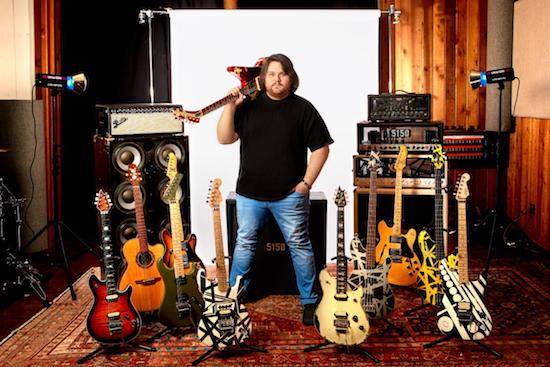
Wolfgang Van Halen, frontman and multi-instrumentalist of Mammoth WVH, has made a deliberate choice in his guitar soloing: melody takes priority over technical flash. While his heritage links him directly to his father, rock-guitar legend Eddie Van Halen, Wolfgang has adopted a different lens for soloing, one less about speed or complexity, and more about serving the song and staying memorable.


Here are the major contours of his approach.
Key Tenets Of His Approach
- Rhythm first, melody second.
Wolfgang has said:“Rhythm is always the first thing for me and melody is the second.”
This prioritisation positions the solo not as a standalone spectacle, but as an integral part of the song’s framework. - One note can be more impressive than thousands.
“You can play a solo that’s one note that can be way more impressive than a solo that’s 2,000 notes. It’s not really the speed at which you play.”
The implication here is that expressiveness, placement and emotional impact outweigh sheer technical fireworks. - Melodic memorability.
Wolfgang credits one of his dad’s core lessons:“A really core thing for me that my dad always instilled is that a solo should be melodically memorable.”
And elsewhere he reiterated:
“My dad would say the best solos are the ones you can hum and sing.”
In other words: Asked to hum the solo after the song, the listener should remember it. - Soloing in service of the song, not the ego.
He said:“It’s more about songwriting when it comes to Mammoth … I don’t want to try and overplay on anything, it really comes to what serves the song best.”
Note the humility: a solo is a tool, not a trophy.
How It Plays Out In Practice
- On his debut album with Mammoth WVH, for example, there were moments where the solo consisted of very few notes, but they sat precisely in context and became standout moments.
- He consciously steps back from some of his father’s signature playing ticks: For example, he often avoids excessive whammy-bar use, saying it’s rarely necessary unless context demands it.
- While he is fully capable of advanced techniques (tapping, etc.), and has said “every song, or at least every solo, has a tapping lick at some point!”, he still frames those techniques as flourishes, not the centerpiece.
Why This Matters In The Modern Rock Landscape
- In an era where “shred” can sometimes become an end in itself, Wolfgang’s stance is a refreshing counterpoint: it says emotion and hook matter more than velocity and volume.
- By focusing on memorability and musicality, his solos become more accessible and enduring, they help a song live, rather than simply demonstrating chops.
- This approach also helps him carve his own identity. Being Eddie Van Halen’s son places enormous expectations, but by emphasising melody over speed, Wolfgang signals he’s not just replicating a legacy, he’s evolving from it.
What Guitarists Can Learn From Him
- Ask yourself: Does this solo give the listener something they’ll remember? Or is it just a blur of notes?
- Listen for the hook. If you can hum the solo or recognise it the next day, you’re on the right track.
- Use technique as accent, not foundation. Shredding fast is fine, but make sure the solo has a shape, a purpose, a voice.
- Sit in the rhythm. Since Wolfgang begins from rhythm, ensure the solo flows out of the song’s groove and doesn’t feel like a separate rocket launch.
- Resist filling space just because you can. Sometimes less is more. A well-placed bend, slide, or sustained note can resonate far more than a 16-bar run of rapid licks.
Final Thoughts
Wolfgang Van Halen stands as an interesting bridge between generations: rooted in the legacy of one of rock’s most iconic guitarists, yet committed to forging his own path. His solo philosophy, prioritising melody, song‐service, and memorability, offers a compelling alternative to the “faster / more notes” dogma. For listeners, it means solos that linger in the ear. For players, it means a roadmap: make it sing, make it matter.
If you like, I can pull up examples of specific solos by Wolfgang and highlight the melodic lines in them (with notation or tab) to illustrate this in action. Would you like that?
Leave a Reply